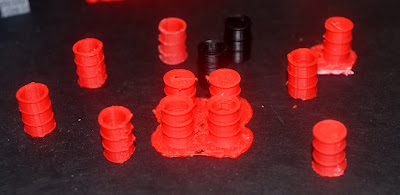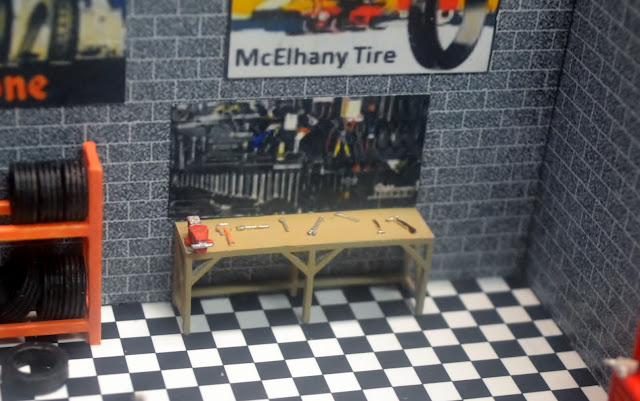There is a lot of information on the internet regarding sizes and styles of pianos, so that was easy information to come up with. In my assortment there are four sizes of grand pianos, and three sizes of uprights. As usual, I drew them in SketchUp, full size, then scaled them down for 3d printing. Because of the fineness of detail needed for these items, I sent the files to Shapeways for printing in their FUD material.
FUD, Frosted Ultra Detail, is very brittle, and I broke a stool and the peddles of a piano. Since Shapeways sent me LOTS of extra stools and benches, I did not bother trying to fix the stool. I usually glue FUD with either CA or five-minute epoxy. I had trouble with both, getting it to hold when the glueing cross-section is only .025 inches square was an issue. Guess what I used, yeah, Aleene's Tacky Glue to the rescue.
Note above that I said t Shapeways sent me lost of stools and benches. I am not sure why, but I assume they had some issues with other items being printed in the same batch, and they ended up with extra benches and stools, like lots of extras, so they had no use for them, so I got them. I used them to make a wall display of benches and stools, and I still had extras left over to put in my furniture box for later use.
For the store setting, I built floor and one wall for now. (The store front is under development, and will be posted at a later date.) The floor and wall are just some scraps of 1/4" plywood that I had laying around. I found images of wood flooring, rock wall and oriental rugs on the fabulous internet, and using PhotoShop and PowerPoint, I put together walls and flooring sheet to print out on photo paper.
I coated the paper with dull coat to seal it, and obviously remove the gloss. I painted the plywood flat black, then glued the paper to the plywood. Anyone who knows me, knows what I used to glue the paper down, Aleene's Tacky Glue. I use it for everything. I don't thin it, I just brush it out very thin, and press the paper in to it. Pressing the corners down extra hard.
This assortment is available at piano-store-stock.
Here are some shots of the diorama as it stands now.
The shelves on the wall and the music rack were printed on one of my home printers, the M3D.
Note that every piano was to have either a stool or a bench, and I received enough extras to put at least one bench and one stool at each piano, put some on the shelves on the wall, and still had some left over!
The three smaller grands.
I added a design to the front of the tallest upright. This was 3d printed as a raise area, and then highlighted with a silver pen.
The two smaller uprights.
A little lower angle side view.

My original plan was to have this be the view through the front windows.
But now, I think I may go with this end as the front.
FWIW, I plan on building the store front using a Cricut, and building it up in layers. First I have to to learn a 2d CAD software.
Some of my previous blog entries with items that were 3d printed at Shapeways:




















































